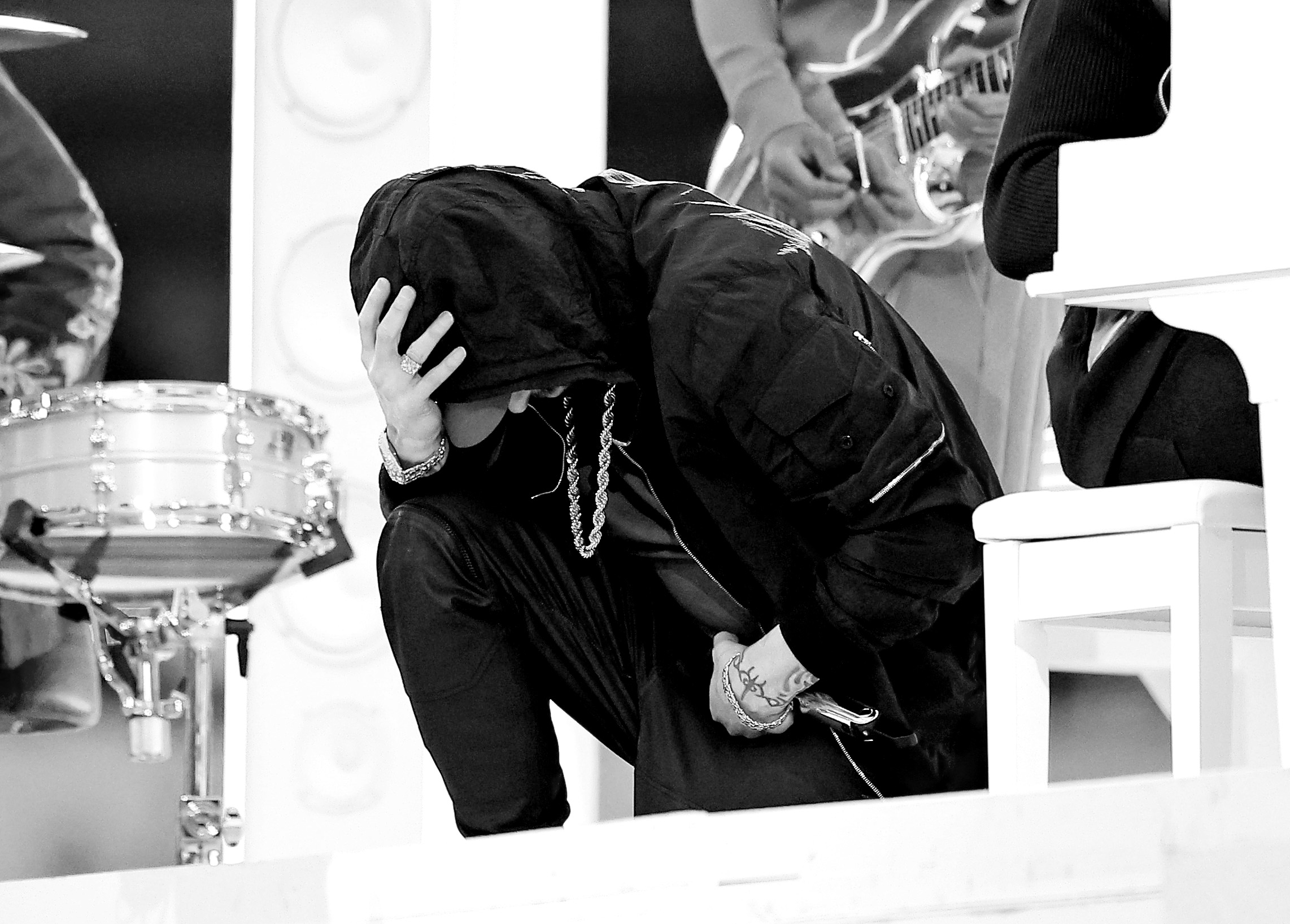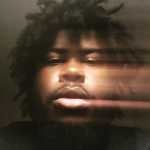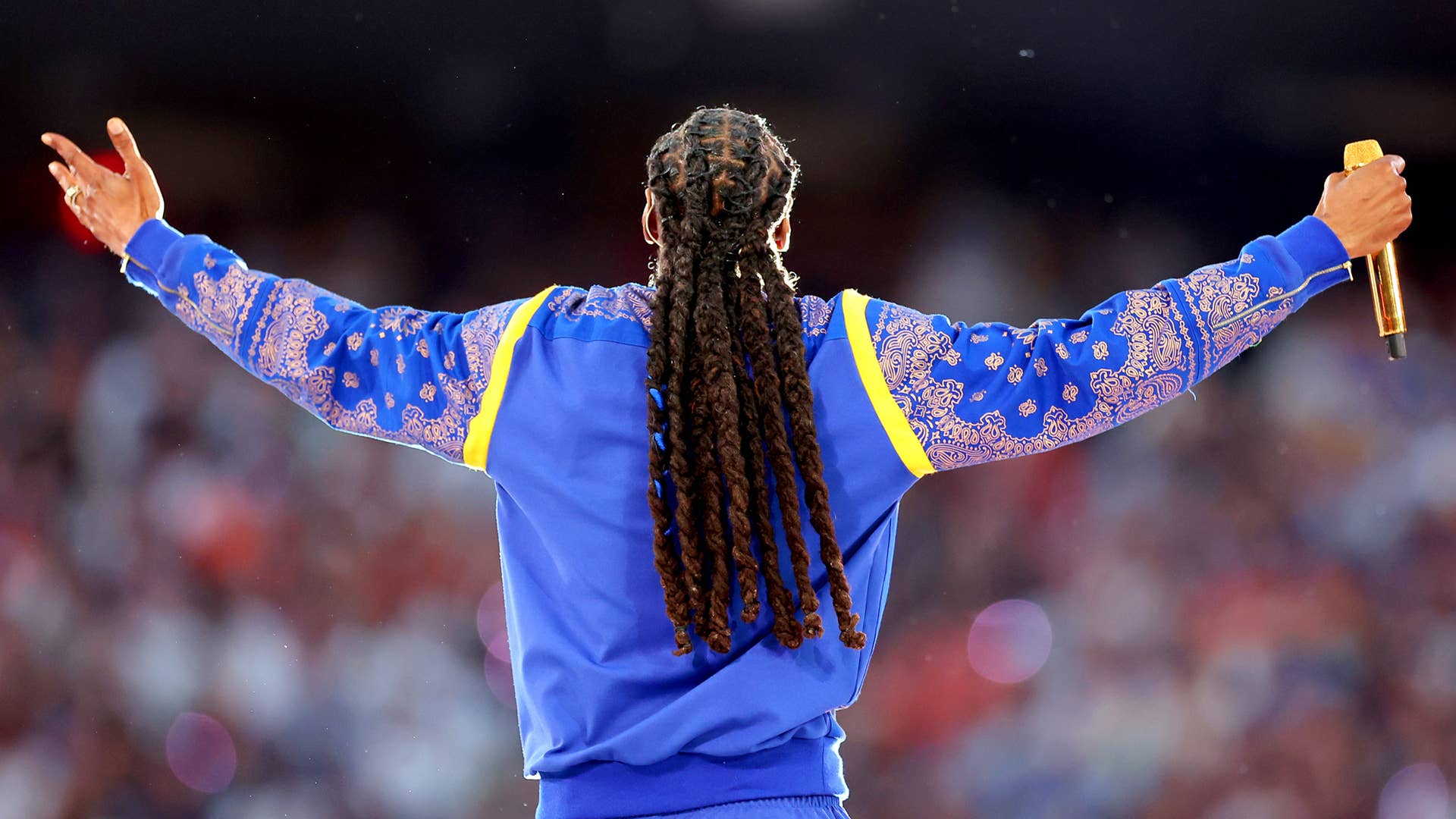
The Super Bowl halftime show is the domain of megastars who boast enough wattage to captivate the world’s attention. Dr. Dre and his superstar proteges met the moment, putting on for L.A. and the rap game as a whole. They pulled off one of the best Super Bowl halftime performances ever, and the first to showcase a bill full of rappers (as well as the “Queen of Hip-Hop Soul” Mary J. Blige).
It was an unforgettable 15 minutes that deserves to be celebrated on that merit, but many things are true at once. The performance didn’t make us forget the controversy that the performers are embroiled in, and it doesn’t absolve the NFL of its awful, discriminatory practices toward players and coaches.
Rumors surfaced on Sunday that the league policed Snoop’s wardrobe and censored Dre’s “still not lovin’ police” and Kendrick Lamar’s “we hate po-po” lyrics. Eminem was allegedly told not to kneel onstage, though he kneeled anyway.
The NFL was reportedly fearful of sparking a “culture war” by letting rappers be their unfiltered selves, but league brass already chose their side of that divide by trying to police the performance. It cues to the same mentality behind the league blackballing Colin Kaepernick, maintaining racially biased practices for coaches, and only ending a policy that assumed Black players had a lower cognitive function last year. The performance opportunity was just a Roc Nation-devised olive branch that decided to accept because rap deserved a moment like this.
Stars like Nelly, Missy, Travis Scott and others have been a part of Super Bowl halftime shows in the past. But 50 years into the genre’s history, and decades into hip-hop’s stranglehold on pop culture, there had never before been a rapper as a headliner, or an all-hip-hop lineup. So even if the show was, more than anything, a placatory gesture, we were going to take it to the max. It’s in hip-hop’s DNA to make lemonade out of lemons.
Roc Nation was smart enough to convince the league to book artists with hits so massive that they kept us arrested in the moment. The bill was too big to fail. It made geographical sense to choose Dr. Dre, a king of L.A., and it just so happened that some of his closest collaborators are also icons. They all showed why during the 15-minute performance. Dre and Snoop took to the LA-themed set and started out with “Next Episode” and “Califonia Love,” two tracks that you can’t help but hear and picture lowriders, palm trees, sticky green, and bad traffic.
50 Cent performed “In Da Club,” adorned in the G-unit tank top and a headband that took us back to ’03, when he burst onto the scene. Some people had jokes that he looks closer to 46 than 2003’s 26, but the clip of him pulling himself up onto the ceiling with no help indicates that it’s still just as bad an idea to try 50.
Mary J. Blige’s “Family Affair” and “No More Drama” offered disparate glimpses of what made her the Queen of Hip-Hop Soul. “Family Affair,” in particular, is one of the hardest beats an R&B singer has ever sung over. Kendrick Lamar also popped up, not with new music, but with a captivating performance of “Alright” replete with dancers wearing “Dre Day” sashes. His performance was so passionate that one song was all he needed, even though he could’ve jumped into “Humble” or “DNA.”
The acronym of beautiful spectacle is BS, and there was plenty of that for the league and its performers to step over. Roger Goodell wanted the rhythm, but not the blues.
Eminem took over next by kneeling to Tupac’s “I AIn’t Mad Atcha,” which was a far more appropriate tribute than a rumored hologram would’ve been. He then jumped into “Lose Yourself,” one of hip-hop’s most provocative tracks. Dre and Snoop closed things off with “Still D.R.E.,” the single with the flickering keys that once signified Dre’s comeback in 1999. Now, they’re a reminder that Dre’s musical legacy will never go away.
This moment was well-deserved for a genre that went from house parties, playgrounds, and park jams to worldwide stages. It was a kick in the ass to corporations who, throughout Snoop and Dre’s heyday, tried to tap into hip-hop by booking safe acts instead of getting the real deal. This was for Snoop, Dre, and Eminem CDs being steamrolled by conservatives vilifying their art as the source of moral decline. We’d all do better to not care about appeasing the white gaze or seeking white validation. But at the same time, it had to have felt good for the performers, and hip-hop forefathers, to feel like the entire world was all enjoying a rap set at the same time.
It would have been nice if the reaction could end there. But unfortunately, that’s not the whole story. The acronym of beautiful spectacle is BS, and there was plenty of that for the league and its performers to step over. The qualms start with the show’s headliner Dr. Dre. There were millions of women who couldn’t enjoy the performance in light of his past violence toward women like Dee Barnes, who he physically assaulted in 1990 for interviewing his then-foe Ice Cube. Many people feel like he hasn’t properly atoned for a moment he omitted from his Straight Outta Compton biopic and tried to quell with a PR-crafted apology that didn’t actually acknowledge her name.
Once again, a hip-hop milestone has to be considered with considerable nuance because of violence against women. As much as everyone loves Snoop, it has to be acknowledged that he and his longtime friend Bishop Don Juan were just slapped with a sexual assault and battery suit. And that Kendrick Lamar once threatened to pull his music off Spotify if they took XXXtentacion off playlists because of his abuses toward his ex. It may be easy to perceive acknowledging these moments as trying to “tear them down,” but it’s more important to consider the discomfort of survivors who didn’t experience the joy most felt from the performance. Consider that Dre’s ex Michel’le deemed herself “a quiet girlfriend who got beat on and told to sit down and shut up,” as well Barnes’ words from a 2015 Gawker piece:
“When I get migraines, my head does ring and it hurts, exactly in the same spot every time where he smashed my head against the wall. People have accused me of holding onto the past; I’m not holding onto the past. I have a souvenir that I never wanted. The past holds onto me.”
And that’s why it’s not fair for Dre to be relinquished from that same past because we enjoy his music. While Dre continues to be deified in spite of abuse, Barnes says she’s been blacklisted as a survivor.
It speaks to the NFL’s desperation that they had him on the bill in spite of that history. The militaristic organization has plenty of controversial headlines that harken to its history as a racist institution, and they desperately needed good PR to offset them. Tracing the path of the show’s creation leads back to Colin Kaepernick’s protest against systemic oppression, which the NFL stifled, blackballed him for, and then colluded with Jay-Z to take the stench off. If Kaepernick was simply allowed to use his platform to bring light to police brutality and other injustices, perhaps the league wouldn’t have booked Sunday’s extravaganza. But in that alternate history, they wouldn’t have upset so many Black viewers, like this writer, who resolved to stop watching the league after they policed Kaepernick’s silent protest. No matter how many opportunities Jay-Z garners for rappers and Black people to utilize the NFL’s profile, we can’t forget that the genesis of the connection was a shady deal that the iconic rapper should have denied in solidarity with Kaepernick.



